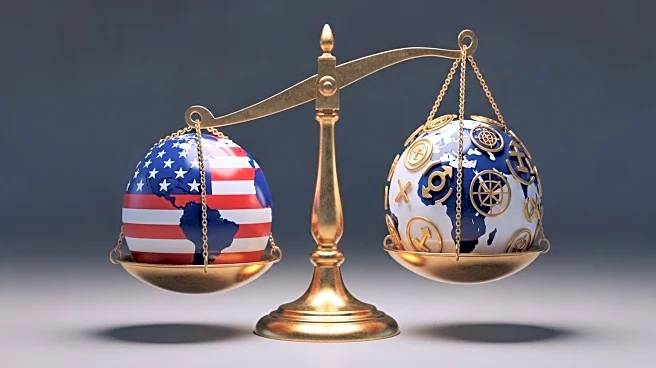What's Happening?
President Trump is considering distributing up to $2,000 to Americans as a 'dividend' from the revenue generated by tariffs imposed on foreign nations. This proposal comes as the Supreme Court is set to hear a case that will determine the legality of these tariffs. Since April, the federal government has collected significant revenue from these tariffs, with projections reaching up to $1 trillion annually. The proposal aims to use this revenue to pay down the national debt and potentially distribute funds to the public. However, any such disbursement would require congressional approval. The Supreme Court's upcoming decision could potentially force the government to refund between $750 billion to $1 trillion if the tariffs are deemed illegal.
Why It's Important?
The proposal to distribute tariff revenue as a dividend could have significant implications for U.S. economic policy and public finances. If implemented, it could provide a financial boost to American citizens, similar to previous stimulus checks issued during the COVID-19 pandemic. However, the legality of the tariffs is under scrutiny, and a Supreme Court ruling against them could lead to substantial financial liabilities for the government. This situation highlights the complex interplay between executive power, judicial oversight, and legislative approval in shaping U.S. trade policy and economic strategy.
What's Next?
The Supreme Court is scheduled to hear oral arguments in the tariff case in early November. The outcome of this case will be crucial in determining the future of the tariffs and the feasibility of President Trump's proposed dividend. If the court rules against the tariffs, the government may need to explore alternative strategies for managing the national debt and supporting the economy. Additionally, congressional approval will be necessary for any distribution of funds to the public, which could lead to further political negotiations and debates.











